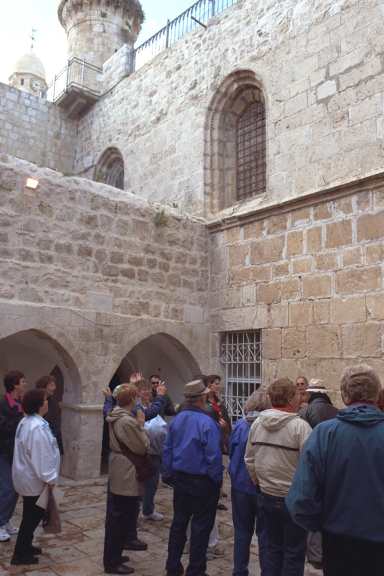
Normally I don't spin my head around religious trivia, but this has something to do with the script I'm researching so I can begin writing. It's been interesting-- I'm combing through early (first through third century) writings and learning a bunch. (One fact that's very creepy, is that the Catholics have taken what they believe to be body parts of the twelve disciples and they're scattered about at different shrines and churches. For instance, the head of Andrew might reside one place, while his arm another. I apologize my Catholic friends, but I do find that creepy. I'd rather have a relationship with Jesus, the real thing, than the arm of a man who died two thousand years ago.)
Anyway, so I'm researching and found some interesting tidbits. Some have believed that the Upper Room in Jerusalem belonged to young John Mark's mother. I've heard that before and makes for some interesting thoughts-- that Mark was there in the house during the Last Supper.
The other interesting thing is that Barnabus is John Mark's mother's brother-- ie his uncle. Does it stand to reason then that Barnabus was there as well?
We know that Jesus walked around with an entourage. You had the twelve men, handpicked by Jesus. You have the seventy that also followed him. Then you have the 300... In Acts, when they picked a replacement for Judas, the requirement was that the man had to have been with them since the start-- that means there were others than the twelve hanging out all the way through. Barnabus was one. Matthias of course was another.
Anyway, these are all interesting tidbits as I start to outline this script.
The veneration of relics dates back to the beginning of Christianity. Their view of death, of burial, etc. are much different and hands on then they are today.
ReplyDelete"Few point of faith can be more satisfactorily traced back to the earliest ages of Christianity than the veneration of relics. The classical instance is to be found in the letter written by the inhabitants of Smyrna, about 156AD, describing the death of St. Polycarp. After he had been burnt at the tate, we are told the his faithful disciples wished to carry off his remains, but the jews urged the Roman officer to refues his consent for fear that the Christians "would only abandon the Crucified one and begin to worship this man."
Eventually, however, as the Smyrnaeans say, "we took up his bones which are more valuable than precious stones and finer than refined gold, and laid them in a suitable place, where the Lord will permit us to gather ourselves together, as we are able, in gladness and joy, and to celebrate the birthday of his martyrdom."
You can read more at: www.newadvent.org/cathen/12734a.htm
Yes-- and I've been reading other real interesting writings of the early church fathers. Very, very interesting stuff.
ReplyDelete